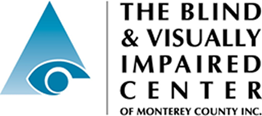There are a wide variety of technologies and devices which can help you maximize the use of your remaining sight. In our AT Lab you can learn about and try a variety of helpful technologies, equipment, and aids such as:
- Pocket, handheld and stand magnifiers
- Loupes, spectacles
- Magnifier lamps, mirrors
- Binoculars, monoculars
- Bioptics
- Computer software for screen modification and screen reading
- CCTV’s
- Text to speech software
Many of these devices are available for short-term loan so you can test them at home and determine their usefulness before deciding which devices will best help you. We also sell, rent and loan devices.
What are Low Vision Devices?
Low vision devices can help you maximize your remaining vision, enabling you to perform everyday tasks more easily and with less frustration. Some devices, such as optical and non-optical aids, offer very simple and relatively inexpensive solutions. Other devices, such as electronic and digital magnifiers, may be slightly more complex and costly. However, both optical devices and electronic or digital devices require training to use them efficiently and effectively. Training is always one of the main keys to success with the use of low vision devices. Our Low Vision Services Coordinator provides this training.
There are several different categories of low vision devices: optical devices, non-optical devices, and electronic magnifiers and magnifying systems. Low vision devices are task-specific, designed for close-up visual tasks or distance viewing. Depending upon your eye condition and your everyday living needs, you may require several different devices to accomplish different tasks.
Low Vision Optical Devices
Low vision optical devices include a variety of helpful visual aids, including stand and hand-held magnifiers, strong magnifying reading glasses, loupes, and small telescopes. Because these devices can provide greatly increased magnification powers and prescription strengths, along with higher-quality optics (i.e., the way the lens bends or refracts light), they are different from regular glasses and magnifiers that you can buy in a local store or online. These devices often require a prescription and training to help you use them effectively.
Low Vision Non-Optical Devices
Low vision non-optical devices can include adaptations such as reading stands, supplemental lighting, absorptive (or glare control) sunglasses, typoscopes, and tactile locator dots. They can be used in combination with low vision optical devices and can help with reading, organizing, labeling, and a variety of everyday tasks.
Electronic Magnifying Systems
Electronic magnifying systems come in many different varieties and sizes, depending upon the task or activity you want, or need, to do. Some have a camera system that displays a magnified image on a monitor, which can be helpful for reading mail, books, and magazines, while others are hand-held, portable, and can be taken to the supermarket to read labels and coupons, or to restaurants for reading menus.
How Can I Obtain a Low Vision Device?
Low Vision devices are often recommended as part of a low vision examination. A low vision exam by our low vision specialist — an optometrist with credentials or specialization in low vision testing, diagnosis, and treatment — is the best way to decide what type of device or devices are best for you, your eye condition, and your everyday living needs. At your low vision evaluation, you will have the opportunity to try a variety of devices in a variety of settings and learn first-hand how they can work for you.
